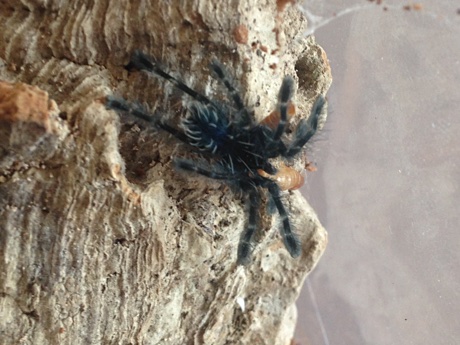Feeding a Caribena versicolor sling and a tiny scorpion
Today I was finally able to feed the Caribena versicolor sling that has been in my care since the first of this month. I held a small mealworm, Tenebrio molitor, with tweezers close to it, and it "jumped" on the small prey item. In the past the small tarantula had refused food items of the same size, no idea why. Maybe still getting used to its enclosure.

I was also finally able to feed a second instar Chaerilus sp. "Java"; a very small scorpion that I have been keeping since the 7th of April 2020. While it has small springtails in its enclosure, which maybe it eats, I prefer to actually see it eat. So in the late afternoon I managed, after a few attempts, to start it accepting and eating a very tiny mealworm larva.